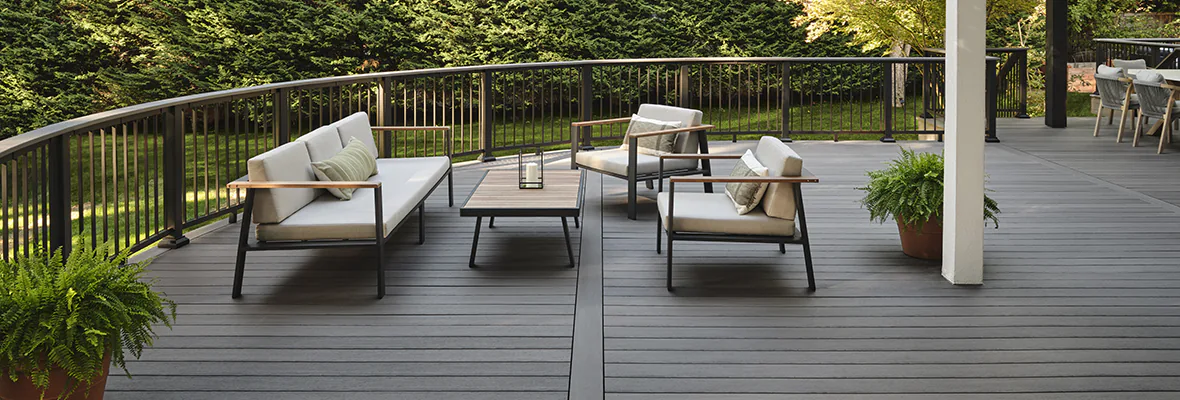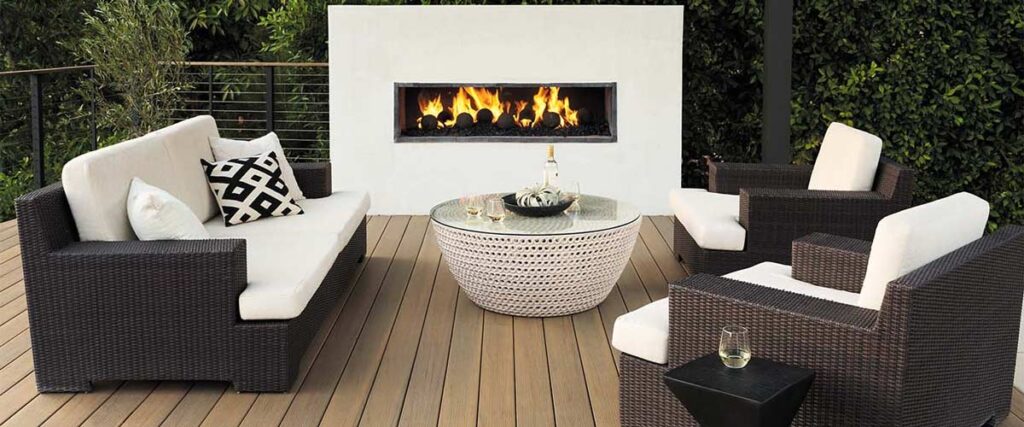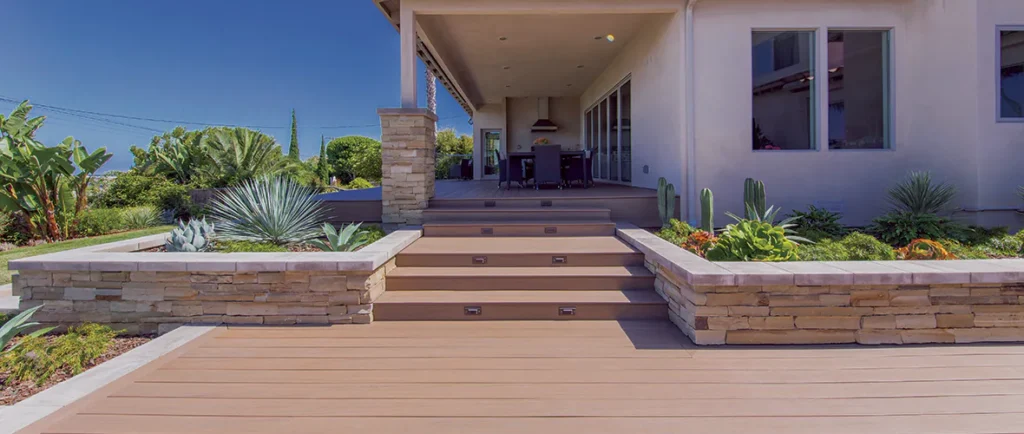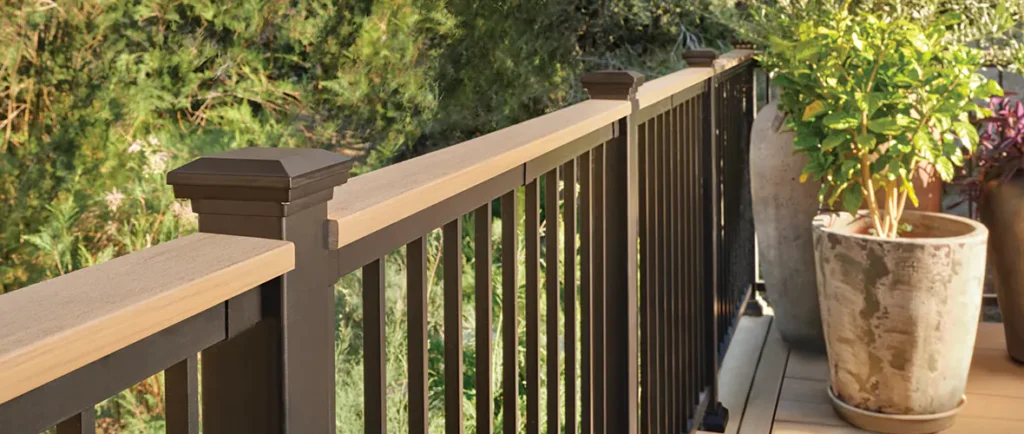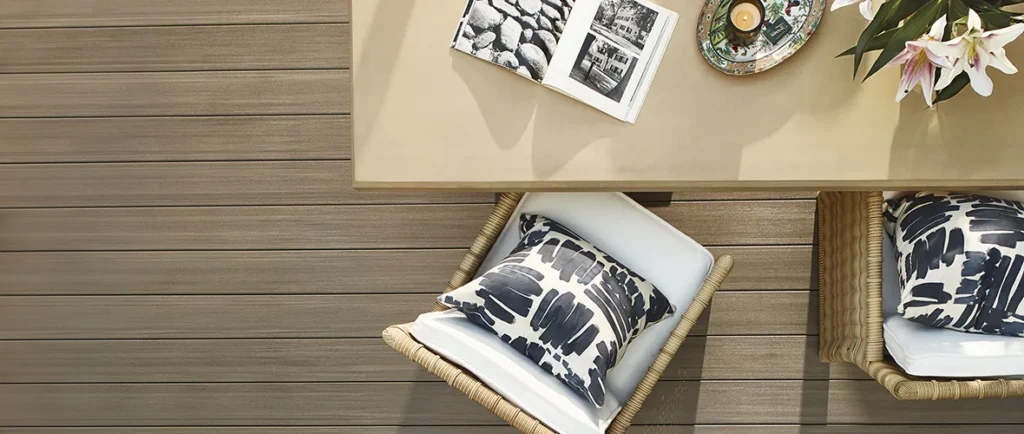When it comes to decking, there’s no one better to guide you through the possibilities than Patrick Barnds, our Senior Vice President of Product Management. With over 20 years of experience creating innovative interior and outdoor flooring solutions – and our iconic real wood looks – Patrick knows exactly how to bring style, functionality, and durability together into a beautifully designed outdoor space.
Whether you’re starting small or going for a bold, intricate design, this guide will walk you through the many options available to customize your deck design. From surface patterns and colors to advanced elements like curved decking and inlays, Patrick’s insights will help you make confident, informed choices that reflect your unique vision.
- Surface Pattern and Color
- Wide and Mixed Board Widths
- Picture Framing Your Deck
- Breaking Up the Surface with Borders
- Adding Unique Insets of “Rugs”
- Curved Decking for a Contemporary Look
Surface Pattern and Color
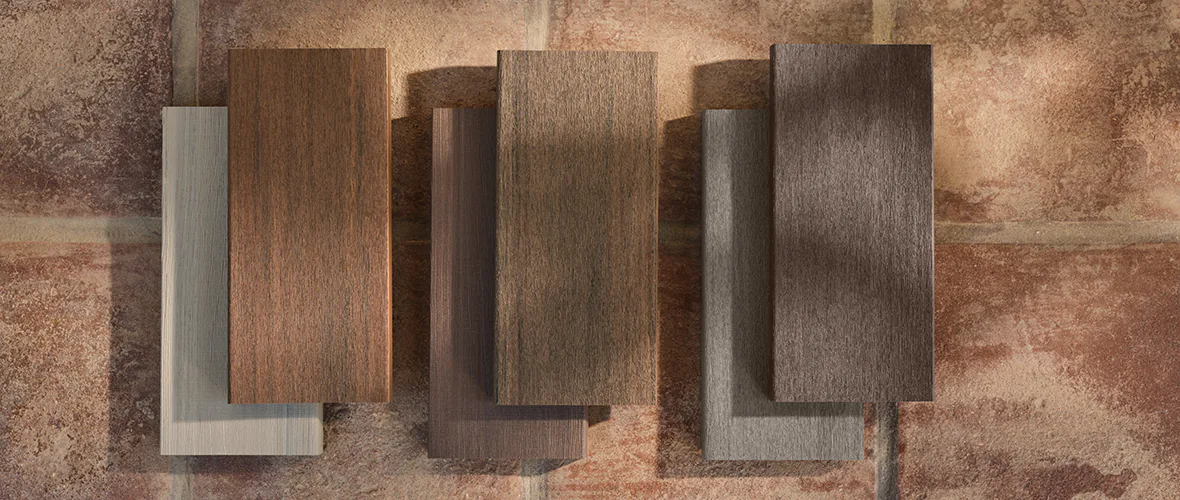
The simplest way to start customizing your deck is to look at all the design options offered in terms of colors, visual patterns, and textures available in decking products. These options range from wire-brushed textures (Vintage and Terrain+ Collections) to hand-scraped (Legacy Collection), cross-cut (Landmark Collection), reclaimed wood styles (Reserve Collection), and natural wood textures (Harvest and Harvest+ Collections).
You’ll also find a variety of color choices. For example, exotic hardwood visuals like Vintage Mahogany and Cypress or more traditional domestic and hardwood looks like Weathered Teak and French White Oak. Selecting the surface pattern and color alone allows you to make a bold design statement in itself.
Wide and Mixed Board Widths
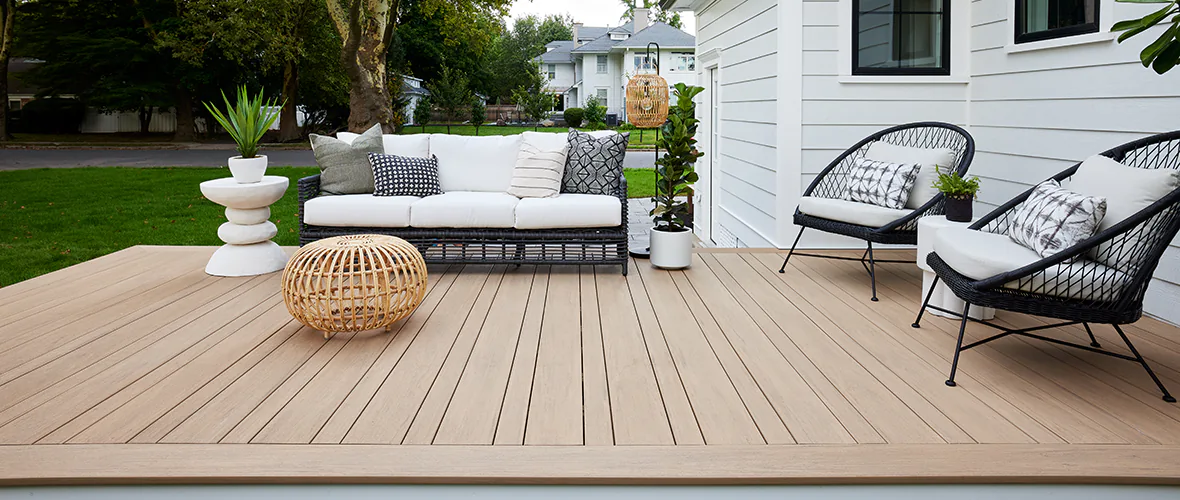
For those looking to step ahead of the current design trends, consider wide and mixed board widths. The Vintage Collection offers narrow (3 ½”), standard (5 ½”), and wide (7 ¼”) board widths. Borrowed from interior design trends in hardwood flooring, this option is rapidly gaining popularity in exterior decking.
You can go with all wide width or mix and match any combination of widths. Some designs even include “insets” or “inlays” using different board widths for added interest. Doing this just requires a little extra framing and blocking of your deck’s substructure. And you (if you’re DIY-ing your project) or your contractor will just need to calculate the necessary number of boards based on your chosen pattern.
Picture Framing Your Deck
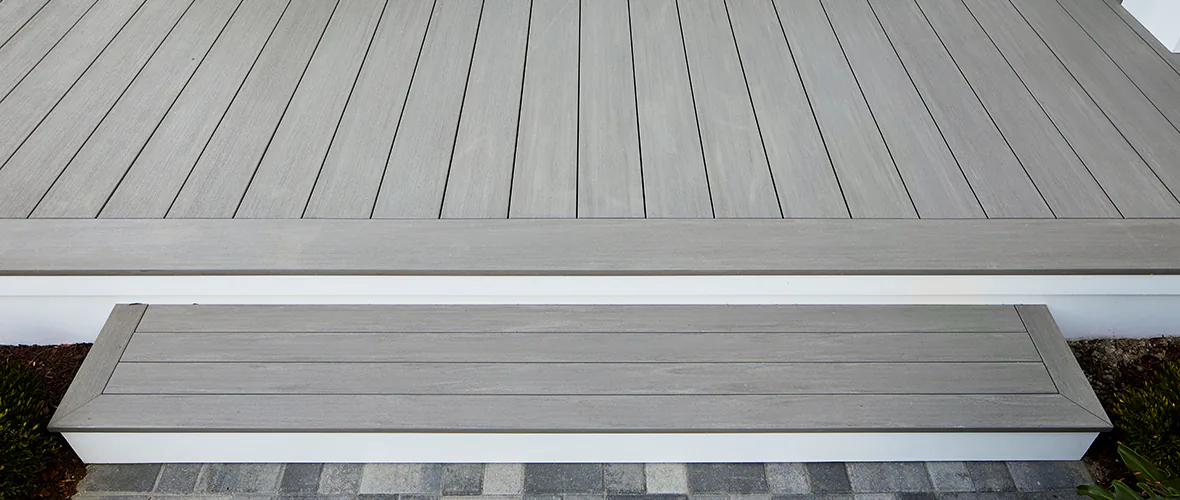
One of the most common design enhancements is picture framing the edges of your deck. If you choose the Vintage or Harvest Collection—you can use the wide-width boards to do this—or with any collection you choose, you can use a standard width board in the same or a complementary color to outline the outer edges. While this does require extra framing or blocking, the work is straightforward and doesn’t take much time. And the polished final look is often well worth it.
Breaking Up the Surface with Borders
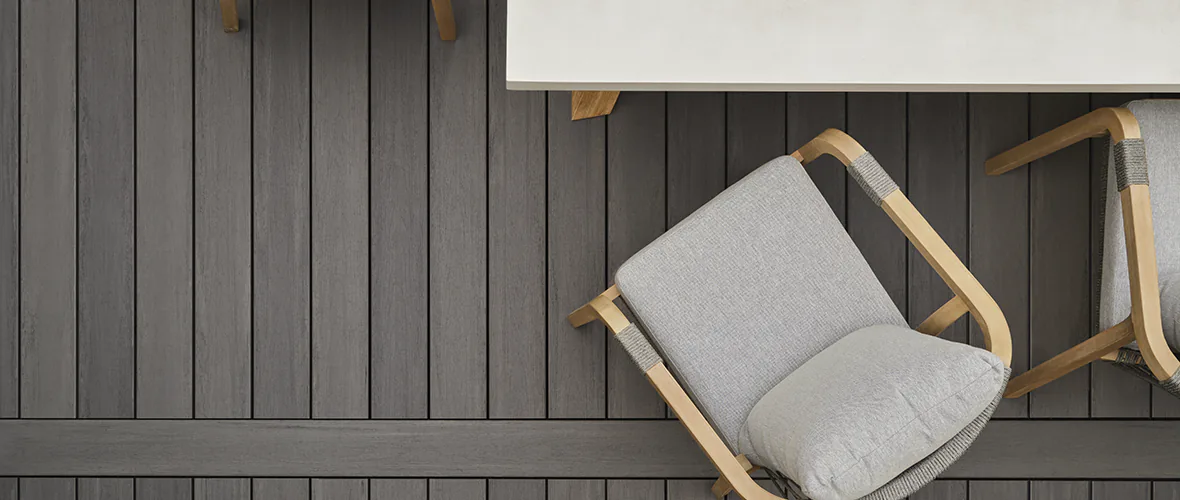
Similar to picture framing, you can subdivide the deck surface into smaller areas with “breaker boards” or borders within the deck’s interior. These can be installed in straight or curved patterns, allowing for creative layouts that complement your outdoor living space’s overall design. If you want a curved design, you will generally want to select one of our Advanced PVC Collections which are designed to be more easily and consistently formed with a special heat-bending technique.
Breaker boards help limit the occurrence of “butt joints” where the ends of two different deck boards “butt” up against each other.
Adding Unique Insets or “Rugs”
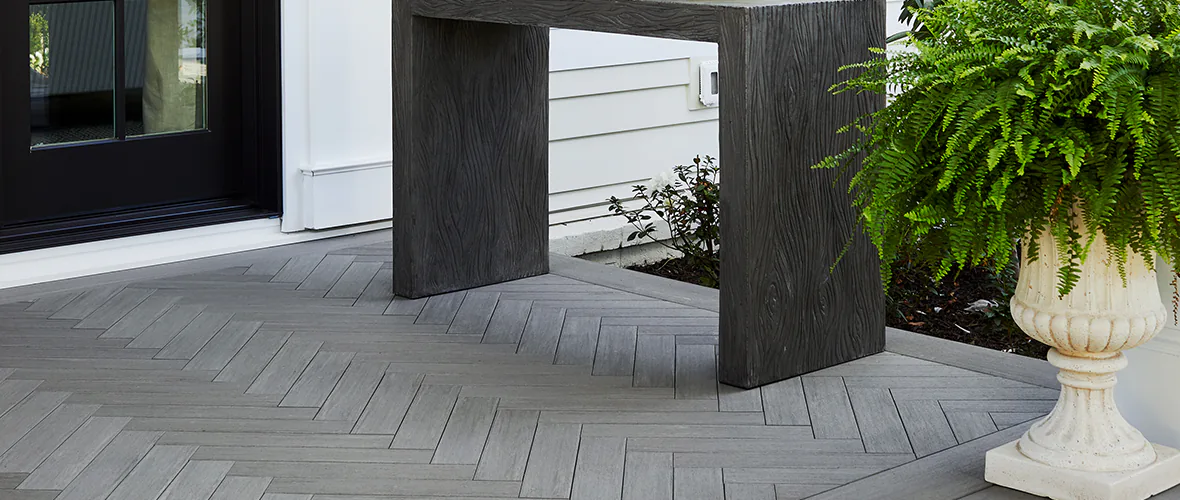
For something truly unique, a more advanced idea is to design insets, “rugs,” or inlays in different patterns and textures. Whether simple or elaborate, these can help your deck stand out.
These designs will require additional framing or blocking to support the pattern, particularly at the cut ends. While this option may involve higher labor costs, the result will be a genuinely unique deck.
Curved Decking for a Contemporary Look

If you want a curved design, you can use either our Advanced PVC or Composite decking options with a heating bending technique. However, TimberTech Advanced PVC collections are the best choice for these designs as this material is much easier to bend consistently. While this is an advanced option, it’s fairly easy to heat-bend if your contractor has the proper equipment and some experience.
It’s important to note that while curved decks can be visually stunning, they should be used thoughtfully to avoid overcomplicating the design. They can also be incorporated within rectangular frames for a balanced aesthetic.
Personalizing Your Outdoor Living Space
Your deck has the potential to become a defining feature of your home. Take the time to explore the design options and work with your contractor to create a deck that is uniquely yours. By balancing aesthetics, functionality, and safety, your deck will become a long-lasting investment you can enjoy for years to come.
Not sure where to start? Get expert advice, personalized guidance, and a clear plan with our free Deck Concierge service.
